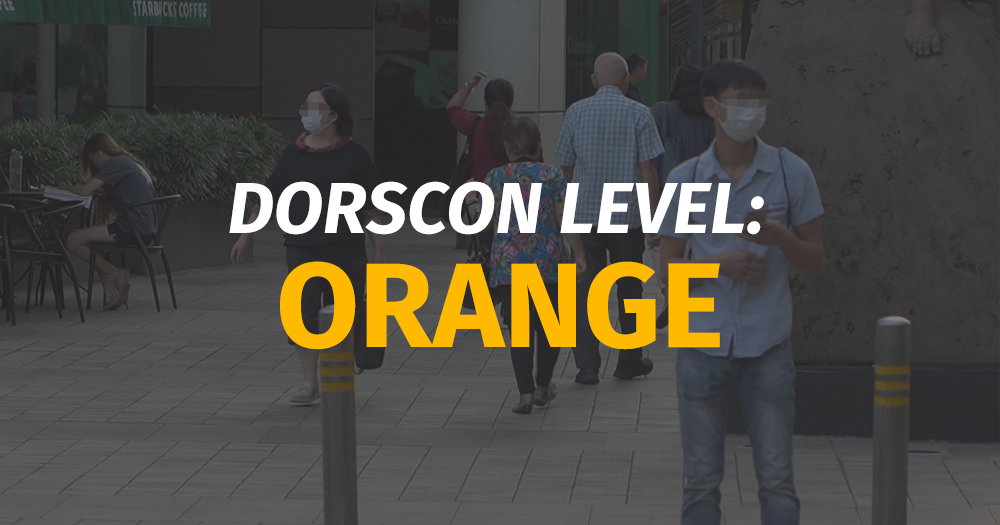Singapore has raised its Disease Outbreak Response System Condition (DORSCON) to Orange.
It was previously at Yellow.
Here's why the DORSCON level has been raised.
Community spread has now been confirmed by the Singapore government.
Contact tracing for case 29 has not established a link to any previous cases or travel history to mainland China.
All three new cases confirmed today, as of this article, do not have any links to previous ones, but contact tracing is underway.
What is DORSCON?
DORSCON is part of Singapore's pandemic preparedness framework that serves as an indicator of disease situations.
It accounts for both the severity of the disease as well as its spread, in order to predict its impact on the community.
MOH's risk assessment for DORSCON includes the following:
- The current disease situation overseas.
- How transmissible the disease is.
- How likely it is to arrive in Singapore, and
- What impact it may have on the local community.
DORSCON uses colour-coding to illustrate the different intensities of the disease situation, with Green being the mildest, followed by Yellow, Orange, and finally Red as the most heightened response.
What do the different colours mean?
Green
A Green DORSCON status indicates that either the disease is mild, or that it is severe but is not easily spread between people.
In terms of the impact of Green level diseases on daily life, they are minimally disruptive. Typical measures taken involve border screenings and travel advice.
Diseases that have fallen into this category in the past are the 2012 Middle East Respiratory Syndrome (MERS) outbreak and bird flu.
Yellow
Yellow means that the disease is severe and spreads easily, but outside of Singapore or that it is spreading in Singapore, but is typically mild or contained.
Diseases in this category also cause minimal disruption, although additional measures at the borders and/or healthcare settings can be expected, and it's likely that there will be more people than usual missing school or work.
An example of a DORSCON Yellow alert in the past is the 2009 swine flu pandemic.
Orange
Diseases in the Orange category are severe and spread easily, but have not spread widely in Singapore and are being contained.
Orange indicates that there will be moderate disruptions to daily life, including measures such as quarantine, temperature screenings, and visitor restrictions at hospitals.
At the Orange level, the public would be advised to comply with control measures set forth by the government.
Although the DORSCON framework was not yet set up during SARS, MOH reports that the measures Singapore took at the time would have been counted as Orange.
Red
Diseases that fall under the DORSCON Red category are those which are severe and spreading widely.
A disease of this level would likely cause major disruptions to daily life, such as through school closures and orders for employees to work from home, and would see a significant number of deaths.
Under these circumstances, members of the public would be advised to distance themselves socially by avoiding crowded areas.
Top photo: screenshot from Mothership video
If you like what you read, follow us on Facebook, Instagram, Twitter and Telegram to get the latest updates.


